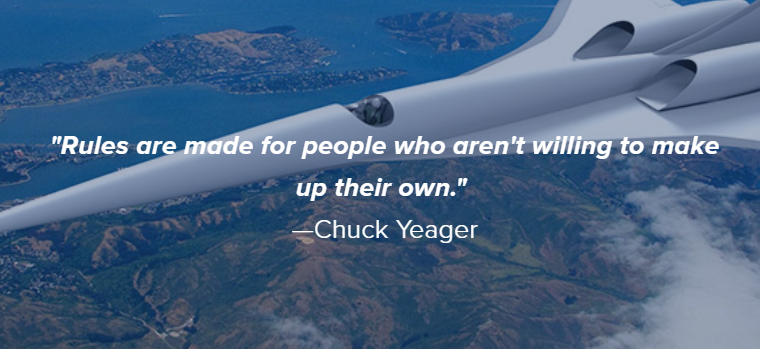I am pleased to announce the release of a new paper I co-authored with Eli Dourado and published with the Mercatus Center, Make America Boom Again: How to Bring Back Supersonic Transport.
The paper makes a comprehensive case for rescinding the Federal Aviation Authority’s 1973 ban on civil supersonic transport overland. Now that advancements in aviation technology have made it possible to design low-boom or “quiet” supersonic aircraft, we argue that the ban ought to be replaced by a reasonable noise standard. Failure to do so has continued to contribute to our aviation speed stagnation.
In conjunction with the paper’s release, the Niskanen Center is also proud to announce the launch of SupersonicMyths.com. I created SupersonicMyths to present our research in an accessible and easy to share format, and to refute many of the biggest misconceptions about the physics, economics, and environmental viability of commercial supersonic transport overland.
You might be asking: why is a poverty and welfare policy analyst working on supersonic transport? The answer is simple. From my first day at the Niskanen Center, I have emphasized the centrality of innovation and growth to our shared prosperity. If you truly care about improving the lives of the poor, the prospect that we have entered an age of technological stagnation ought to be your number one concern. And in the case of supersonic transport, our stagnation has clearly been self-imposed.
As we note on SupersonicMyths.com:
Everyone stands to benefit from supersonic transport. Nonetheless, early technological adoption among a luxury or business class of consumers is a recurrent phenomenon in the spread of innovation. As Everett M. Rogers showed in his seminal work, Diffusion of Innovation, early adopters are often willing to pay a high initial price for a new product due to greater resources and the pursuit of social status. From there, firms reinvest profits in product design and use the benefits of volume and scale to introduce subsequent product versions with more and more mass market appeal. This is how cell phones went from a luxury used by Wall Street’s Gordon Gecko to being in the pockets of poor farmers in Africa. It’s also the strategy Tesla Motors is using to mainstream affordable electric vehicles.
The theory of industry learning curves is of such high importance to the aviation industry that it appears to be where the idea first originated. Climbing a learning curve is like climbing a mountain. Government efforts like the Concorde or the Boeing 2707 failed because they attempted to go from the base to the top of the mountain in a straight path. Instead, industries with learning curves require trial and error in order to find the few paths up the mountain that don’t run into dead ends. A market in supersonic business jets would be able to iterate on low boom and cost saving technologies while learning exactly what routes the market will bear. Only then would passenger capacities increase for the routes with the highest demand, eventually working up to full size passenger jets that bring truly affordable supersonic transport to the masses.
Read the paper in its entirety here.
